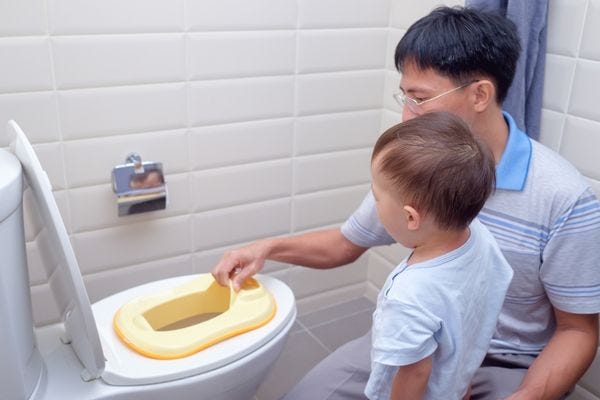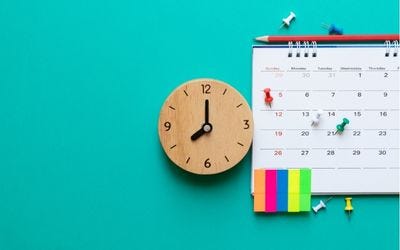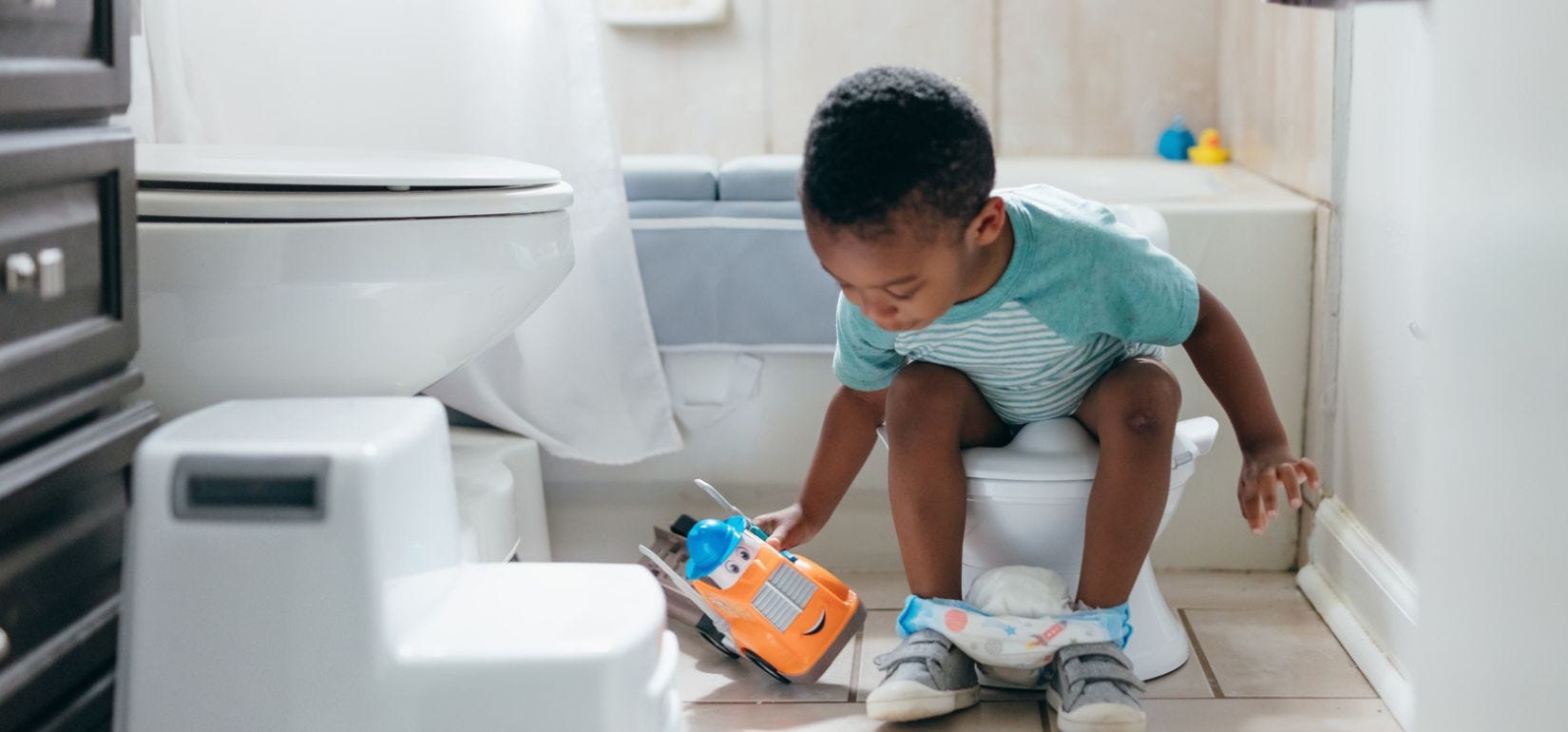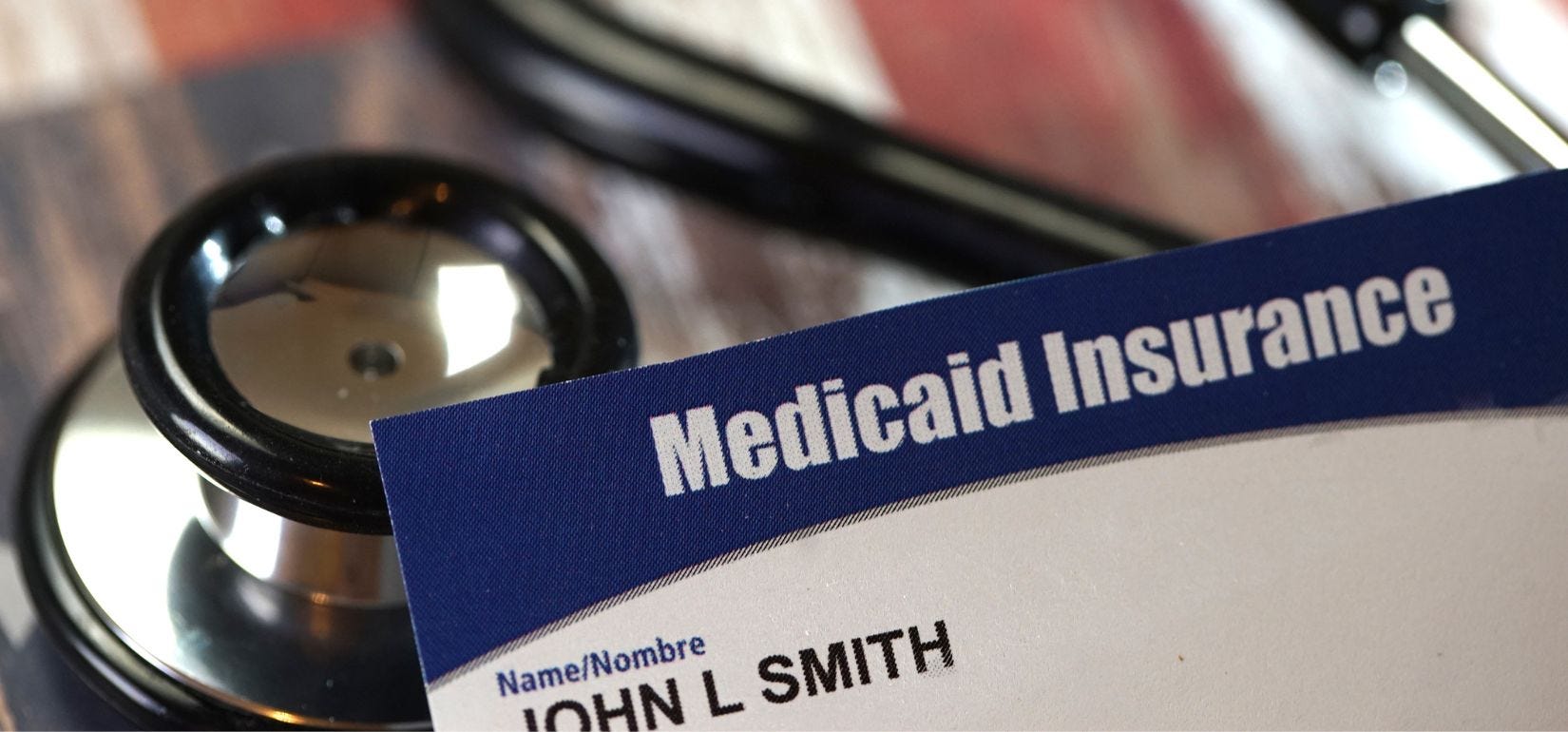Article updated 9/12/23.
"Communication Needs" section reviewed by Andi Putt, Neurodivergent Speech Language Pathologist and Reviewer for Aeroflow Urology.
If your child has autism spectrum disorder and is transitioning out of diapers, you know that the toilet training process can be long and challenging for both parents and kids. This process can be more arduous or lengthy due to the unique challenges that children with autism face.
From overstimulation to sensory delays and language barriers, there are many reasons why your child may have difficulty using the toilet.
This article offers a 5-minute guide to toilet training issues in children with autism so you can quickly understand the challenges you may face.
What Is Autism Spectrum Disorder?
According to the National Autism Association, 1 in every 54 children is diagnosed with autism spectrum disorder (ASD).
Autism is a bio-neurological developmental disability that impacts the normal development of the brain. It can alter how your child interacts socially, communicates verbally and non-verbally, thinks, plays, and uses the bathroom.
Autism is thought to be caused by both genetic and environmental influences. Older adults who give birth are more likely to have a child with autism. Children with autism may have comorbidities or other correlating medical conditions; Eating and digestive problems, incontinence, sensory integration dysfunction, and epilepsy are all intertwined with ASD.
Check Your Eligibility
2 Easy Steps
Diapers and pull-ons for children ages 3+ with special needs, available through Medicaid.
In some children, autism can be recognized as early as age 2, but others may be diagnosed later.
Potty Training Obstacles for Children With Autism
Toilet training for children usually begins at 2 ½ to 3 years old, which is right around when many children with ASD start to get diagnosed, so autistic children may not potty train until they’re older. But, every special needs child is different. Your child’s needs will determine when or if they're ready to transition from diapers to the potty.
Similar to the spectrum of autism, there is a spectrum in regards to achieving urinary and fecal continence for said patients. If your child has ASD, they may successfully and swiftly toilet train. Alternatively, some children never learn how to use the toilet or gain control of their bowels or bladder, so you may need to prepare yourself for that outcome.
Potty training any child takes time, patience, and lots of trial-and-error experimentation. During this process, you and your family members should be patient and supportive.


Medical
If your child is on the spectrum, they may have other medical issues associated with ASD. Some common medical comorbidities of patients with ASD that may interfere with their ability to use the bathroom include:
- Gastrointestinal disorders (GI). GI issues, such as abdominal pain, constipation, diarrhea, and poop withholding can all lead to problems in the bathroom.
- Anxiety. Many children with autism also have anxiety. You may be able to recognize potty training anxiety in your child if they show fear of the toilet, bathroom, or toileting routine. These behaviors may also indicate sensory processing abnormalities.
- Attention-deficit hyperactivity disorder (ADHD). If your child has ASD and ADHD, it may take them an extended period of time to potty train. On top of medical issues, they may not have the ability to focus in the bathroom or remember to go.
- Feeding problems. Food aversion due to sensitivity to texture or taste can cause restrictive eating in your child, leading to fiber and nutritional deficiencies. It can also cause GI issues, making it harder to have a bowel movement which can cause issues peeing. Pica can also be seen in those with autism, which can cause painful stooling and constipation. Your child may also suffer from low fluid intake, creating more dense poop.
- Obsessive-compulsive disorder (OCD). Up to 17 percent of kids with autism have OCD. These children may find it difficult to sit on the toilet, use different toilets, or adapt to a new toileting routine.
Physical
It’s estimated that 87 percent of people who have autism are affected by motor skill issues. This could make it more challenging for your child to use the toilet. For example, you may notice that your child:
- Has low muscle tone. We need our muscles for everything in the bathroom, from clothing removal to bladder control. If your child has low muscle tone, they may not be able to do these things independently or fully.
- Cannot hold themselves up properly. If you are attempting to teach your child how to sit on the toilet seat or stand while they pull off their diaper, it will be more difficult if they cannot hold themselves upright.
- Has poor hand-eye coordination.While learning to use the toilet, your child will need to be able to sit their bottom on the toilet, reach for the toilet paper, wipe themselves correctly (eventually), and complete hand washing on their own.
With poor hand-eye coordination, your child may need to do these things many times before understanding how to move their limbs to accomplish the tasks.
- Uses self-stimulatory behavior (stimming). Stimming is a repetitive behavior, such as rocking back and forth or waving your arms, that children with autism usually engage in. It is often one of the most prominent signs of autism. If your child is stimming in the bathroom, it can be challenging to get them to calm their bodies and use the toilet. Depending on their stimming behavior, it can cause safety concerns when they use the bathroom.
- Lacks fine motor control. Fine motor skills involve using the muscles in our wrists and hands to complete tasks like writing and manipulating small objects.


Unfortunately, studies suggest that if your child has autism, they’re likely to be a year behind other children when it comes to mastering fine motor skills. This can affect their ability to wipe or button their clothes.
- Cannot imitate your movements. If you’re trying to teach your child to use the toilet, imitations may be helpful. They can watch you go to the bathroom and copy you. If your child isn’t able to imitate, they may not learn as easily or quickly.
Sensory
Sensory processing disorder (SPD) is often correlated with autism and can affect your child's sensitivity to certain things. SPD occurs when your child’s central nervous system and brain signals are misinterpreted.
The six senses that are affected during SPD and the way they may affect toilet training are:
- Sight: Different things in the bathroom may distract your child.
- Smell: The smell of urine or feces may upset your child. Your child may also engage in fecal smearing if they don’t like the smell.
- Sound: A flushing toilet or the bathroom fan may disrupt your child.
- Taste: Your child may have GI issues from food aversions, causing problems in the bathroom.
- Touch: The feeling of pee, poop, or wiping may upset them. Fecal smearing is often a result of touch sensitivity.
- Balance: Your child may feel like they will fall into or off of the toilet.
There are two other senses that are affected if your child has autism. These can affect your child’s ability to potty train. These are:
- Interoceptive sensory issues / Internal sensory issues: Interoceptive sensors are sensors inside your organs and skin that help you tell what’s happening in your body; If you’re feeling pain, coldness, hunger, or that you need to void your bladder or bowels, these sensors relay the message to your brain.
In your child, the interoceptive sensors may be impacted, resulting in not knowing they need to pee or poo. This can lead to incontinence, constipation, and leakage. - Proprioceptive sensory issues / External sensory issues: Your proprioceptive, also known as external or kinesthetic, sensors allow you to locate your body in space. This sense helps you perform regular activities and tasks, like walking down a hallway without running into the wall.
However, if your child is “clumsy” and often bumps into furniture or people, they may have external sensory issues. Because of this, your child may have a hard time positioning their body over the toilet seat.
Communication
Over half of children with autism have language or communication delays. Many of these children have trouble communicating what they want to say–either verbally or nonverbally— and can also have difficulty understanding what you’re saying to them.
As a result, it may be hard to potty train a child with communication needs. For example, usually, you may be able to say to a child, “I see you had an accident; let’s go to the bathroom.” But a child with a language difference or delay may not understand what you’re saying. They may also struggle to communicate when they need to use the bathroom or when they’re wet. Oftentimes, children with autism communicate in unexpected ways, such as scripting from a tv show, or without pointing or eye contact. Caregivers should be extra perceptive to look out for subtle signs of communication that may look different than typical communication.
Developmental
Children with autism are slower to learn things than children without. Likewise, if your child has ASD, they’ll most likely take longer to learn how to use the toilet.
Routine
If your child is taking a long time to toilet train, it may be because children with autism traditionally have a tough time breaking their usual routines.
When it comes to potty training, using a different toilet or restroom may upset your child. Wearing diapers is also really all your child has known since birth, so that will be one challenging routine to get them to transition out of.


How to Know If Your Child is Ready for Potty Training
Whether or not you should start potty training with your child should be based on their readiness. How can you tell if they’re ready?
Watch for these signs:
- Awareness of being wet or messy.
- The ability to pull their pants up and down.
- The ability to sit comfortably on the toilet seat.
- Gets a clean diaper when they need to void.
- Asking to be changed when they have a dirty diaper.
- Remaining dry at night.
- Finds a quiet spot to go to the bathroom.
You should always talk to your pediatrician or your child's healthcare professional about a plan to help them begin the potty training process. If your child is ready to transition out of diapers, use our helpful guide for tips on toilet training, or read about some solutions for parents with children who have autism.
How Aeroflow Urology Can Help in the Toilet Training Process
Toilet training any child can take a lot of patience and finances. But not to worry! Aeroflow Urology can help. We can assist in supplying your child with incontinence supplies through your Medicaid (and some private insurance) plans. This service is financially beneficial, and it also alleviates stress, and allows you and your child to spend more time together.
How Does It Work?
Instead of running out to the store for diapers or wipes at the last minute, fill out our qualification form at the top of this page. It's quick and easy to do.
Then, if approved, your child’s incontinence supplies will be shipped directly to your home in discreet packaging on a monthly basis, ensuring privacy and ease of use.
More than half of young autistic children have language delays. (2019, May 3). Spectrum | Autism Research News. https://www.spectrumnews.org/news/half-young-autistic-children-language-delays/
Toilet Training A Parent’s Guide. (n.d.). https://www.autismspeaks.org/sites/default/files/2018-08/Toilet%20Training%20Guide.pdf
Autism Fact Sheet | National Autism Association. (n.d.). Nationalautismassociation.org. Retrieved March 17, 2022, from https://nationalautismassociation.org/resources/autism-fact-sheet/?gclid=CjwKCAjwlcaRBhBYEiwAK341jR9iBJjnuR-X5thDQzHzA-Sm4X0TkCnPyLyu5E37rw9Ln7u-SZsWmRoCDdgQAvD_BwE
Yuhas, D. (2019, February 27). Untangling the ties between autism and obsessive-compulsive disorder. Spectrum | Autism Research News. https://www.spectrumnews.org/features/deep-dive/untangling-ties-autism-obsessive-compulsive-disorder/
Schenkman, L. (2020, August 13). Motor difficulties in autism, explained. Spectrum | Autism Research News. https://www.spectrumnews.org/news/motor-difficulties-in-autism-explained/
Research Links Autism Severity With Motor Skill Deficiencies. (n.d.). Psychology Today. https://www.psychologytoday.com/us/blog/the-athletes-way/201404/research-links-autism-severity-motor-skill-deficiencies
About the Senses. (n.d.). Twenty-One Senses. Retrieved March 17, 2022, from https://www.twentyonesenses.org/about-the-senses/?gclid=CjwKCAjwlcaRBhBYEiwAK341jZgXkH2XtCpb7GL9IWoNHUa-LGh4hrC7U9sQVzgiZrn6TYblTdLhlxoC6rMQAvD_BwE
Information provided on the Aeroflow Urology website is not intended as a substitute for medical advice or care from a healthcare professional. Aeroflow recommends consulting your healthcare provider if you are experiencing medical issues relating to incontinence.










